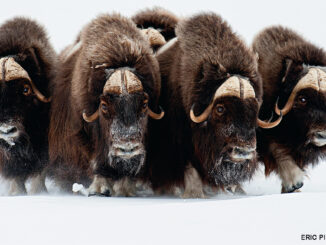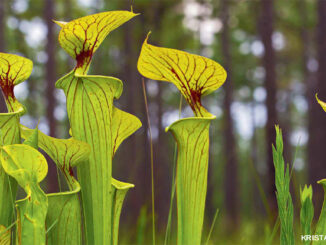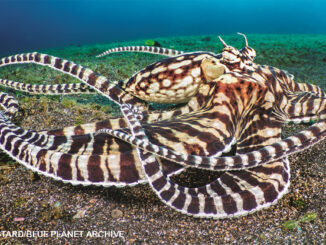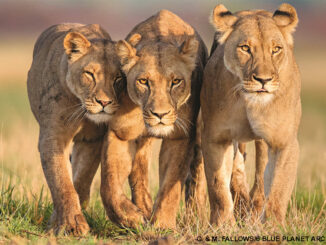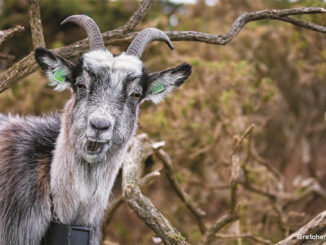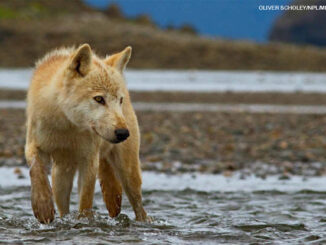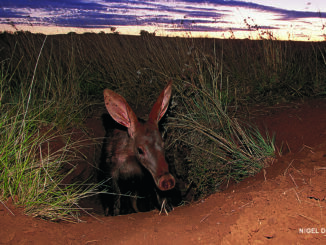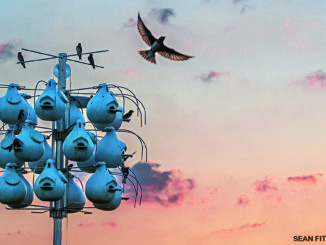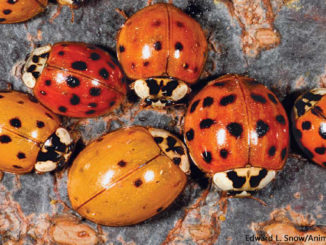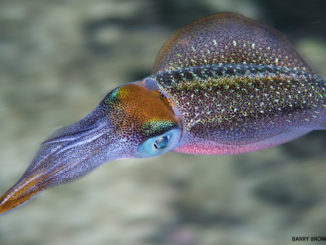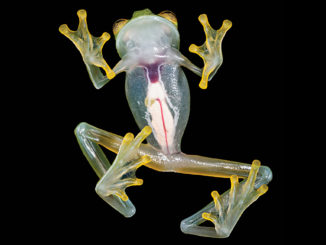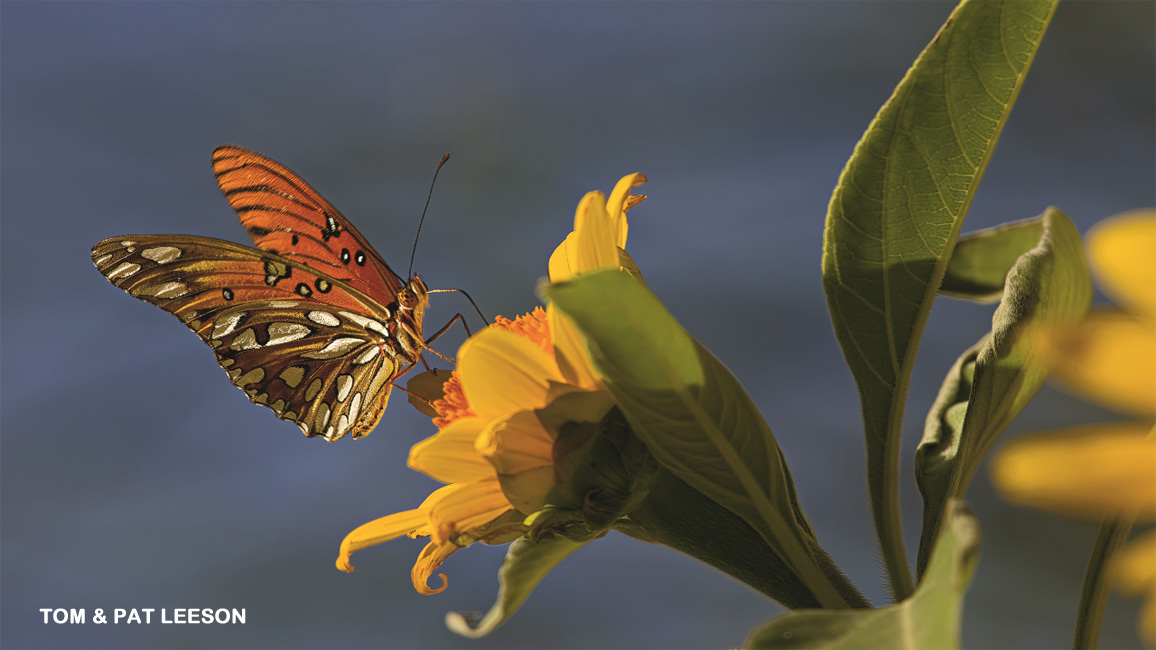
Zoom in on Butterflies
By Kate HofmannButterflies are fluttering by! Which ones will catch your eye?
On a summer day in almost any garden, meadow, or field, you might see butterflies flitting among the flowers. At right are just a few of the many common butterflies found in North America.
Some are good at blending in—or looking like something they aren’t! Notice how the question mark’s folded wings look like brown, dead leaves? Others, such as the monarch, are brightly colored. This can warn enemies that they are full of bad-tasting poisons. Eyespots can also scare away a would-be muncher. See how the buckeye seems to be staring back at you?
The closer you look, the more details you’ll see. The hairstreak has striped legs and antennae (an-TEN-ee). The skipper has extra-large eyes. The plain-looking cabbage white is easy to find in gardens everywhere. It came from Europe and is now one of the most common butterflies in the world.
BECOMING A BUTTERFLY
The amazing change from crawling caterpillar to graceful butterfly is called metamorphosis (meht-uh-MORF-uh-sis). Here’s how one kind of butterfly makes the journey.
A Great Transformation
A beautiful spicebush swallowtail butterfly starts life as something totally different: a tiny, bumpy caterpillar.
The caterpillar grows quickly. When its skin gets too tight, it sheds it (or molts). The new, softer skin underneath can then stretch to fit the growing body. With each molt, the caterpillar changes again. Soon it is green and blends in with the leaves it eats at night. During the day, it rolls a leaf edge around itself to hide (see photo above).
A caterpillar’s job is to eat and grow. (It can end up more than 100 times bigger than when it first hatched!) When a swallowtail caterpillar is fully grown, it spins a silk thread and attaches it like a seatbelt to a branch or leaf. Then it molts one more time to become a chrysalis (KRIS-uh-lis). A chrysalis is like a changing room. Inside, body parts get rearranged as the caterpillar turns into a butterfly.
Depending on the time of year, a swallowtail may spend the whole winter as a chrysalis, or it may merge in just 10 to 20 days. Then it’s a butterfly!

BUTTERFLY BITS
A butterfly is built for flying, fueling up, and finding a mate.
A Butterfly’s Body
Butterflies are insects, and that means they have six legs. (Certain butterflies appear to have only four legs. That’s because the two front legs are so small, they can hardly be seen.) Like all insects, a butterfly has a three-part body with a head, thorax, and abdomen. Four wings are attached to the thorax.
When flying, a butterfly uses its two antennae to help keep its balance and to find its way. It also uses them to pick up the scents of flowers and mates.
To taste, butterflies use their feet! They can land on a flower and tell if it’s a good place to find nectar. Females also use their feet to find the right kinds of leaves to lay eggs on. That’s important because hungry caterpillars must have the right kind of food as soon as they hatch.
Now that you’ve seen some butterflies up close, flit on outside and see what kinds you can find!






